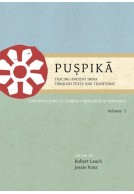Google Books previews are unavailable because you have chosen to turn off third party cookies for enhanced content. Visit our cookies page to review your cookie settings.
The Medieval and Ottoman Hajj Route in Jordan (Hardback)
Imprint: Oxbow Books
Series: Levant Supplementary Series
Pages: 255
ISBN: 9781842175026
Published: 15th July 2012
Script Academic & Professional
Series: Levant Supplementary Series
Pages: 255
ISBN: 9781842175026
Published: 15th July 2012
Script Academic & Professional
You'll be £14.95 closer to your next £10.00 credit when you purchase The Medieval and Ottoman Hajj Route in Jordan. What's this?
+£4.99 UK Delivery or free UK delivery if order is over £40
(click here for international delivery rates)
Need a currency converter? Check XE.com for live rates
(click here for international delivery rates)
Need a currency converter? Check XE.com for live rates
As one of the five pillars of Islam the pilgrimage to Mecca (the Hajj) is central to the life of all Muslims. A network of roads radiates from the Hijaz like a giant spider's web, connecting Mecca to all parts of the Muslim world. Historically the most significant of these routes starts at Damascus in Syria, and is a direct continuation of the ancient trade route connecting Arabia to the Levant. The Prophet Muhammad is known to have used this route when he travelled as a merchant from Mecca to Bosra in Syria. In more recent times this was the route chosen for the Hijaz railway which figured prominently in the great Arab Revolt. A significant part of this route runs through Jordan, from the wide grasslands of the north to the sandy desert of the far south. This book documents the archaeological and architectural remains which line this route, paying particular attention to the forts and cisterns built and maintained by the Ottoman rulers from the 16th century onwards. A series of introductory chapters provide the historical context, with an emphasis on the political and military significance of the route from the 16th to the 18th centuries. In addition to the detailed coverage of Jordanian Hajj forts, the book also describes the sites and path of the route through Syria and Saudi Arabia. The final part of the book describes the results of excavations at one of the forts, which gives an insight into the material culture of both the pilgrims and the soldiers who manned the forts.
Other titles in the series...
Other titles in Oxbow Books...





















